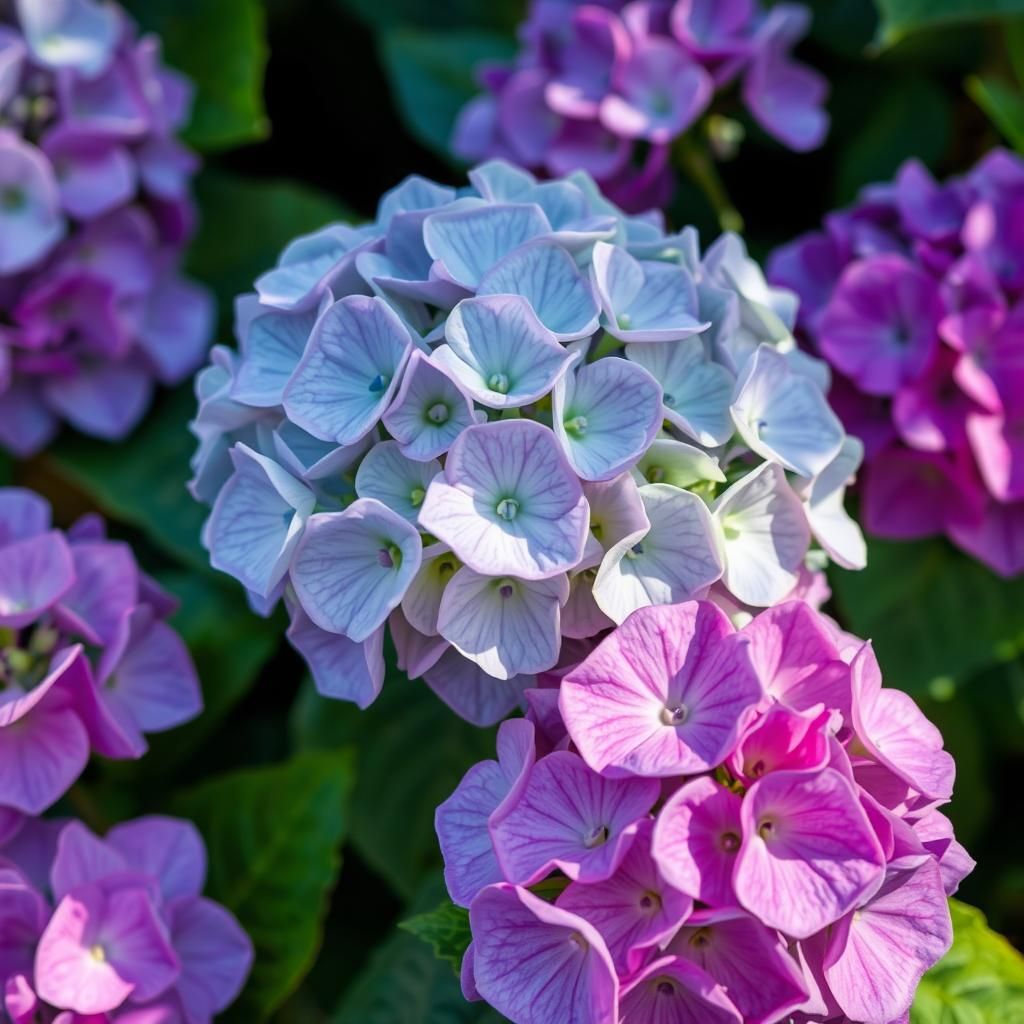Will a Hydrangea Grow in Shade? Understanding Light Requirements for Beautiful Blooms

Hydrangeas are celebrated for their stunning blooms and vibrant colors, making them a favorite among gardeners. However, one common question arises: will these beautiful plants thrive in shade? Understanding the light requirements of hydrangeas is crucial for achieving the lush, flourishing garden you desire. This article delves into the nuances of hydrangea growth in various light conditions, addressing the differences between shade-loving and sun-loving varieties. By exploring key factors such as sunlight exposure, soil conditions, and care tips, you’ll gain valuable insights into whether you can successfully cultivate hydrangeas in your shaded garden spaces.
Can Hydrangeas Thrive in Shady Conditions?
Hydrangeas are renowned for their vibrant blooms and lush foliage, but their ability to grow in shade may come as a surprise to many gardeners. While most varieties prefer partial shade rather than complete darkness, they can indeed thrive in areas that receive only a few hours of indirect sunlight each day. This is particularly true for species such as Hydrangea macrophylla, which often flourish under the dappled light of taller trees. However, the key to success in these conditions lies in ensuring that the soil remains moist yet well-draining, as hydrangeas require consistent moisture to support their growth and flowering. Gardeners must also be vigilant about potential pest problems and diseases that can arise in shaded environments, which tend to retain more humidity.
Shade Tolerance of Different Hydrangea Varieties
Not all hydrangea varieties are created equal when it comes to shade tolerance. For instance, Hydrangea macrophylla and Hydrangea quercifolia can generally adapt well to part shade settings, making them suitable choices for darker garden areas. On the other hand, varieties like Hydrangea paniculata prefer more sunlight to achieve their full potential and may not perform as well in shady conditions. Understanding the specific needs of each hydrangea type can help gardeners select the most appropriate varieties for their landscape.
Soil Requirements for Hydrangeas in Shade
The soil in which hydrangeas are planted plays a critical role in their success, especially in shaded areas. These plants thrive in rich, well-draining soil that retains moisture without becoming waterlogged. Adding organic matter, such as compost or well-rotted manure, can improve soil quality and help maintain consistent moisture levels. Regular mulching can also be beneficial in preventing weeds and maintaining soil temperature, both of which are crucial for hydrangeas growing in less-than-ideal light conditions.
Watering Practices for Shaded Hydrangeas
Hydrangeas in shaded locations often require careful watering practices to ensure healthy growth. Although shade may reduce evaporation rates, the soil can still dry out, particularly if it is sandy or contains less organic material. It's essential to monitor the moisture levels and provide adequate watering, especially during dry spells. Using soaker hoses or drip irrigation can deliver moisture directly to the roots without wetting the foliage, thereby minimizing the risk of fungal diseases that are more prevalent in shaded environments.
See also:
Pest and Disease Management in Shaded Areas
Gardening in shaded areas may increase the risk of certain pests and diseases due to the higher humidity often found in these conditions. Common issues include powdery mildew and aphids, which can thrive in moist environments. Regular monitoring for signs of infestation and implementing preventive measures, such as proper spacing between plants for good air circulation, can help mitigate these problems. Organic treatments, like neem oil or horticultural soap, can also be effective in managing pest populations on hydrangeas.
Choosing the Best Location for Hydrangeas
Selecting the right location for hydrangeas in your garden is crucial for their overall success. Ideally, hydrangeas should be planted in a spot that receives morning sun and afternoon shade. This placement allows them to benefit from the gentler sunlight while avoiding the harshest rays during the hottest part of the day. Evaluating how much sunlight your chosen area receives throughout the day can guide you in making the best choice for your hydrangeas, ensuring they have the right balance of light and shade for optimal growth.
| Hydrangea Variety | Shade Tolerance | Sunlight Preference |
|---|---|---|
| Hydrangea macrophylla | Good | Partial Shade |
| Hydrangea quercifolia | Good | Partial Shade |
| Hydrangea paniculata | Poor | Full Sun |
Optimal Light Conditions for Hydrangeas: Balancing Shade and Sun
Hydrangeas can indeed grow in shade, but their performance varies depending on the type of hydrangea and the amount of light they receive. Many hydrangeas prefer dappled sunlight or partial shade, as prolonged exposure to full sun may lead to stress and reduced flowering. When grown in too much shade, some varieties may struggle to produce blooms or end up with weak, spindly growth. Understanding the specific light requirements of different hydrangea species is crucial for achieving the most vibrant and healthy plants.
Types of Hydrangeas and Their Sunlight Needs
Different species of hydrangeas exhibit varying preferences for sunlight. For example, Hydrangea macrophylla (bigleaf hydrangea) thrives in partial shade, ideally with morning sun and afternoon shade. On the other hand, Hydrangea paniculata (panicle hydrangea) can tolerate more sun exposure, generally performing better in full sun. Understanding these distinctions helps gardeners select the right type for their specific garden conditions.
The Importance of Morning vs. Afternoon Sun
The timing of sunlight is critical for hydrangeas. They tend to benefit from morning sunlight, which helps dry off dew and prevent fungal diseases, while afternoon shade provides relief from intense heat. When hydrangeas receive morning sun but are sheltered from the hotter afternoon rays, they often produce more robust blooms and remain healthier, as this balance minimizes stress on the plants.
See also:
Signs of Inadequate Light for Hydrangeas
When hydrangeas do not receive enough light, several symptoms may become apparent. These can include discolored foliage, reduced blooms, and leggy growth as the plants stretch towards the light. A lack of sunlight may also lead to smaller flower sizes and a weaker overall structure. Observing these signs can help gardeners adjust the conditions to better support their hydrangeas.
Watering and Soil Considerations in Shady Areas
In shady locations, moisture levels can fluctuate, making the soil requirements of hydrangeas even more critical. Too much shade can retain moisture, leading to root rot, while not enough can cause the soil to dry out too quickly. Ensuring proper drainage while maintaining consistent moisture levels is essential. Amendments like organic matter can help improve soil quality and retain water while preventing waterlogging.
Companion Planting with Hydrangeas in Shady Areas
Choosing the right companion plants that thrive in similar light conditions can enhance the overall aesthetic and health of a shaded garden with hydrangeas. Plants like ferns, hostas, and certain shade-tolerant perennials can complement hydrangeas while sharing similar soil and water requirements. This combination not only beautifies the space but also creates a more ecological balance, promoting healthy growth among all the plants involved.
Questions from Our Readers
Will a hydrangea grow in shade?
Yes, a hydrangea can grow in shade, but its growth and blooming may be affected. While some varieties, like the smooth hydrangea and oakleaf hydrangea, tolerate partial shade well, others may require more sunlight to thrive. Ensure that the soil remains moist and well-drained for optimal growth.
What type of hydrangeas grow best in shade?
Panicle hydrangeas and smooth hydrangeas tend to perform better in shady conditions compared to other types. These varieties can adapt to low light situations, making them great choices for gardens with limited sunlight.
See also:
How much shade can hydrangeas tolerate?
Hydrangeas generally prefer partial shade rather than full shade. They typically thrive with around 4-6 hours of sunlight per day, preferably in the morning. Too much shade can inhibit their flowering and overall health.
Should I fertilize hydrangeas in the shade?
Yes, it's beneficial to fertilize hydrangeas growing in shade, but do so with care. Use a balanced fertilizer, and apply it during the growing season to promote vibrant blooms and healthy growth. Just remember that over-fertilizing can lead to excessive foliage at the expense of flowers.
https://youtube.com/watch?v=lsIw-dMLnX4
If you want to read more articles like Will a Hydrangea Grow in Shade? Understanding Light Requirements for Beautiful Blooms, we recommend you check out our Shrubs category.
Leave a Reply
Related Articles